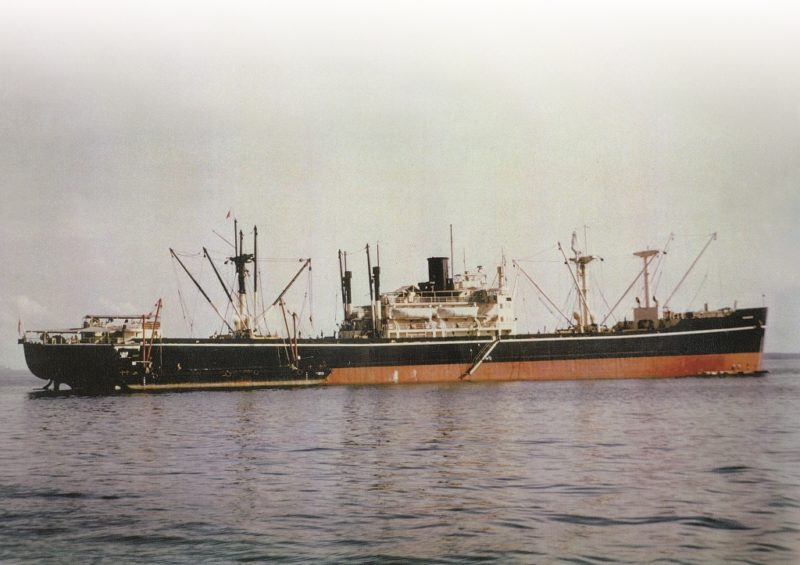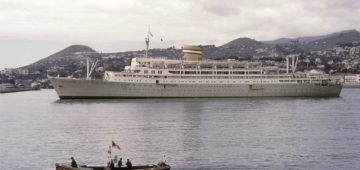
In February 1957 at Brisbane, Australia, Nankin had finished loading a general cargo of wool and mineral sands for Japanese ports. Also included were several tons of steel sheets for Shanghai, these were for discharge at the Port of Shanghai. Nankin would visit the port after Japan and would be the first Eastern & Australian SS Co. ship to do so after the port had been opened by the Communist authorities after the escape of HMS Amethyst some 8 years earlier.
Loading completed, Nankin was waiting for the carpentering contractor to finish building the cattle pens on her fore and after decks. The cattle, Zebu’s, were already alongside in trucks and the two cattlemen who would look after them during the voyage to Japan were already at work installing feed and water bins.
Nankin headed out into the Coral Sea on a direct course to Nagoya, ,Japan to unload the cattle before calling at other ports to discharge the wool and general cargo.
The weather reports for the Coral Sea included a possible low forming in the area that Nankin would transit. As she entered this area the low was identified as a category one cyclone. The wind increased, the waves became higher and the ship started to labour, taking green water over the bow. The cows packed into their stalls were unsettled at the start of the voyage. With the change to their environment, they were now obviously terrified with the severe motion of the ship and the seawater swirling around in their stalls. What the waves breaking over the bow didn’t damage on the stalls their frightened lunging did the rest.
All the fore deck stalls were in ruins, their occupants were loose on the main deck. The cattlemen charged with their care were powerless to do anything with their charges until the weather moderated to allow the ships motion to stabilise.

With the cows virtually having the run of the ship the first of the several mishaps occurred. The Chief Engineer’s cabin became a place of interest for one steer who demolished the cabin while he was being removed. It took a lot of cleaning to make the cabin habitable again. The second was when another steer’s curiosity with the activity in the Chinese Bonus’s cabin managed to get its head stuck fast and had to be euthanised.
The weather moderated as Nankin sailed further north. On the first fine day work started to repair as many stalls as possible with what timber was onboard, and dispose of the cows that had either died of fright, or had to be euthanised because of the injuries suffered during the worst of the weather.
Closer to the port of discharge Nagoya the cattle men reported to the Chief Officer that they were out of cattle feed due to some having been washed overboard during the tempest.
After an exchange of wireless messages the Japanese authorities acted swiftly and arranged for the ship to discharge the cattle at Nagoya and undertake quarantine and customs inspections at her next port of discharge, Yokkaichi, which was across the bay from Nagoya.
After completing the discharge of her Japanese cargo and some loading for the Australian ports, Nankin’s last port in Japan was Moji to pick up a cargo of bagged cement for Shanghai. This to be loaded out of three lighters tied up alongside. All very straightforward, until the proposed sailing time for Shanghai had passed with the empty lighters still alongside. The Harbour Pilot, already onboard, seemed unfazed as if this was a regular occurrence in Moji. Some five hours after sailing time a tug arrived to remove the lighters, one at a time. The Master Captain O’Neill was worried that his ship would be very late for quarantine and customs inspections at Shanghai and how this would be received by the Port authorities.
Subscribe today to read the full article!
Simply click below to subscribe and not only read the full article instantly, but gain unparalleled access to the specialist magazine for shipping enthusiasts.





Comments
Sorry, comments are closed for this item